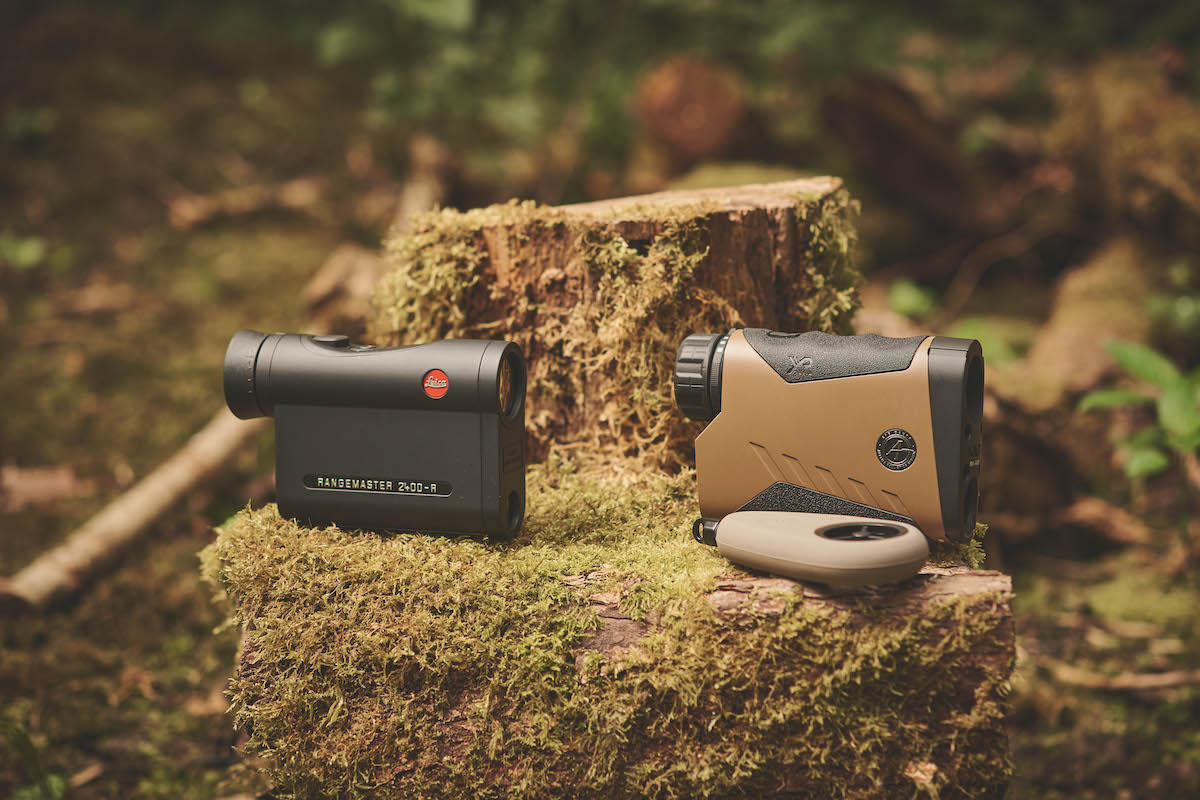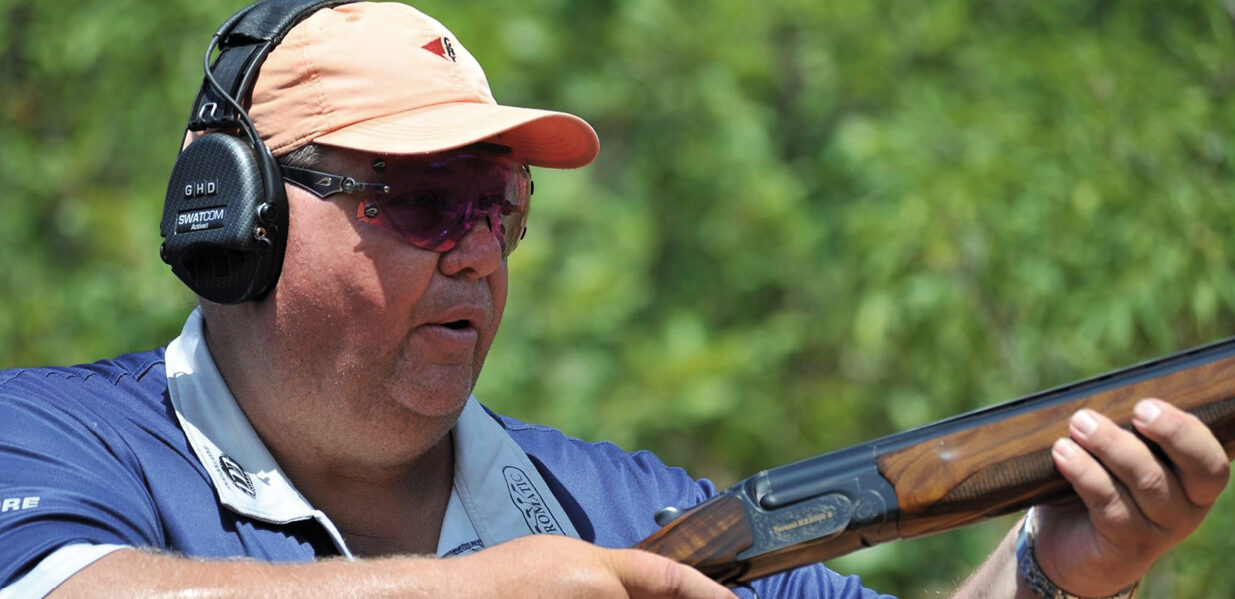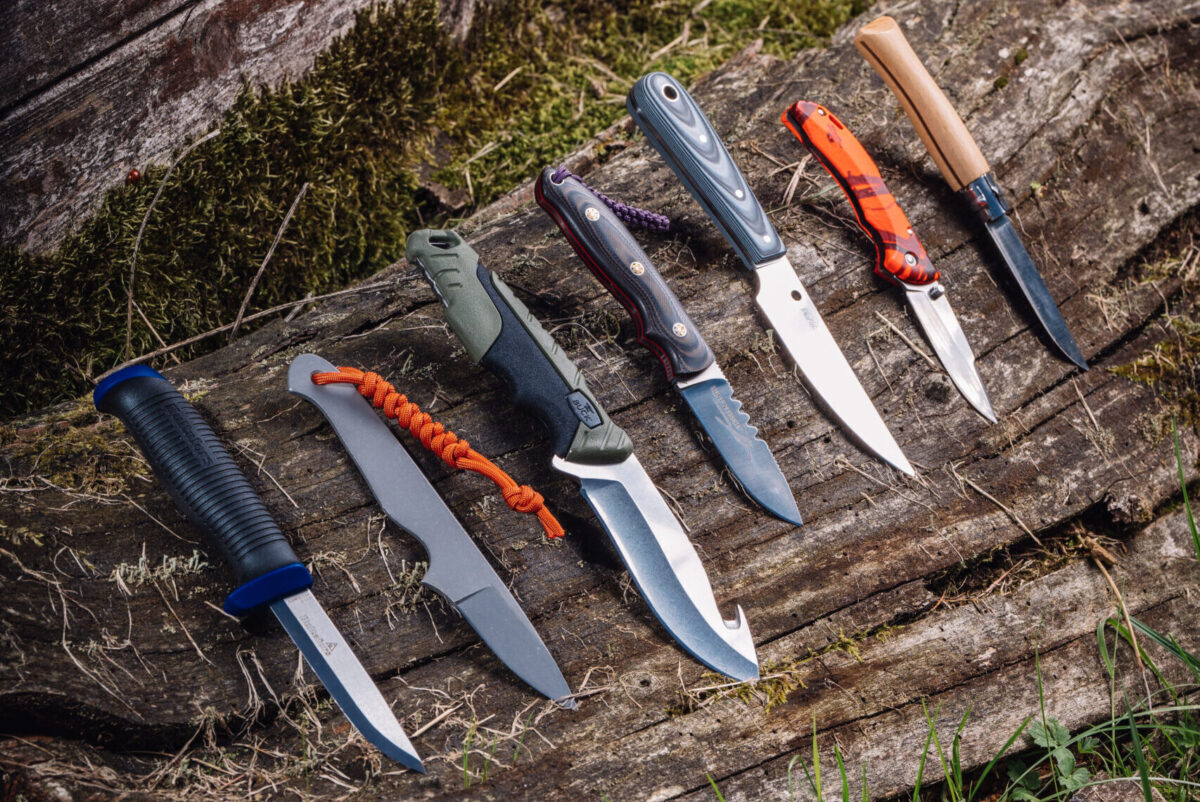Two high quality laser rangefinders to be thinking about
Mat Manning takes a look at two high-quality laser rangefinders that promise to help keep rifle shooters bang on target

Laser rangefinders
The value of a good laser rangefinder should never be underestimated when it comes to accurate shot placement with a rifle. (Read Bruce Potts on what you need to know about laser rangefinders.)
Bullet drop affects point of impact as your projectile travels downrange. The way to solve the problem is to aim off or adjust your sights, but you can’t do that with much confidence if you don’t know exactly how far away your target is.

While some shooters estimate distance fairly accurately, a rangefinders offers reassurance
It isn’t only long-range shooters who can benefit from a good rangefinder. I do a lot of airgun shooting, when the rise and fall of a pellet over relatively short distances can result in shots being way off the mark if I don’t apply correct aim-off. The curve of the trajectory is slightly less pronounced when I use my .22 rimfire for squirrel and rabbit shooting, but I still need to compensate for it to hit the mark. (Read the best rangefinding binoculars.)

Using a rangefinder can be the difference between a clean kill and a clean miss
Correct range estimation can make the difference between a clean kill and a clean miss or, worse still, a wounding shot. With that in mind, even though I can gauge distance fairly accurately by eye out to around 60m, I like the reassurance of laser rangefinders. Place the reticle over the target, press the ranging button and the distance is precisely measured and displayed on the screen, taking away any guesswork or uncertainty.

The Leica gives accurate, fast readings and is small enough to fit in a pocket
1. Leica Rangemaster CRF 2400-R RRP £500
My main requirement for laser rangefinders is that it should be small enough to fit in my pocket and give fast, accurate readings at the press of a button. At 110mm long, 32mm wide and weighing 185g, the CRF 2400-R meets the first requirement. It clocks range with +/- 0.5m precision from 10m to 200m, with 1m accuracy out to 400m and with precision within 0.5% out to its maximum 2,200m, so it fulfils my latter demand well, too.
It runs on a CR2 battery and has a rotating dioptre that ensures sharp focus of the red LED display, which has a simple layout for quick, clear reading. Features include equivalent horizontal range mode for angle-compensated distance readings and a choice of using metres or yards.
There are more sophisticated Leica models, but the 2400-R’s simplicity makes it perfect for shooters who only want to know how far away a target is. Rather than stow it in my pocket, I used the supplied bag and strapped it to my belt for an evening’s rabbit shooting. This proved to be useful as it prevented the rangefinder from digging into my belly (as mine usually does) as I crawled across the ground to sneak within striking distance of my quarry.
When the time came to range rabbits, the Leica worked a treat. Its 7x magnification made easy work of picking out small targets, while still maintaining a wide field of view. I was wearing gloves to keep biting flies at bay and still found the simple control buttons easy to operate. The result was quick, precise ranging that enabled me to confidently apply aim-off and put rabbits in the bag — some of them at considerable distance.
I was out roving the fields until dusk during that first outing. Typical of Leica optics, image quality remained good in the failing light. My next outing with the Leica was cut short by an unexpected rainstorm. The surprise downpour drenched me, my rifle and the rangefinder. It proved to be a successful test of the Leica’s waterproofing and there was no hint of any fogging when I checked it.
Rating 9/10
BUY NOW

The Sig Sauer Kilo 8K ABS rangefinder uses Bluetooth to link to a smartphone
Sig Sauer Kilo 8K-ABS RRP £2,863.99
The Kilo 8K-ABS rangefinder is a serious piece of kit with a serious price tag. It is loaded with features — more than I would ever need for stalking rabbits along the hedgerows — and should prove to be a useful piece of kit for shooters who are really pushing the distance, especially those tackling super-long targets on the range.
It comes with some handy extras, including a tripod adaptor and WeatherFlow wind meter. The package includes a substantial bag that can hold the whole kit and a smaller pack that can attach to your belt to hold the rangefinder. The 8K is fairly compact at 112mm long and 33mm wide, and weighs in at only 215g. It runs on a single CR2 battery, from which it should deliver 4,000 range readings. Basic features include a multi-position twist-up eyecup and dioptre adjustment ring.
With a maximum reflective range of 8,000 yards (well over four miles) this unit has serious long-distance potential. The ceiling for deer is more like 2,000 yards, but that is still very impressive.
Bluetooth enables you to connect it to the wind meter and a phone via the Sig BDX app. It can also be connected to compatible optics, while its ballistic software can calculate aim-off and illuminate the appropriate aim-point on the scope for 25 different bullet profiles. Menus are accessed by pressing and holding the mode button and are simple to navigate.
My modest efforts to bag bunnies with my .22 LR didn’t really stretch this remarkable rangefinder, but the key thing is that it was simple to use and the additional tech (which will be extremely useful to a lot of shooters) didn’t get in the way.
The rabbits on my permissions are usually very skittish by the end of the summer and don’t hang around while you fumble with complicated kit. Thankfully, all I had to do with the Kilo 8K was point it at my target and press the button for an instant distance reading before getting on with the shot.
I managed to master the Kilo 8K within minutes and really liked the bright Lumatic display, which shows a lot of information clearly and is easy to read in all light conditions.
Rating 8.5/10
Laser rangefinders – conclusions
Both laser rangefinders featured here are high-quality models that do exactly what they were designed to do, while offering two very different choices. The Sig Sauer Kilo 8K-ABS is a feature-packed model for shooters who like their electronic gadgets, while the Leica CRF 2400-R boasts simple operation and dependable performance.
Both units scored highly and my final verdict was a close call, but the Leica just snuck ahead because of its simplicity and the fact that it costs a fraction of the price of its counterpart. That is based on its suitability for the sort of shooting I do and I don’t doubt that shooters who want to place bullets with pinpoint precision at extreme range will find the electronic wizardry of the Sig Sauer to be worth the outlay.







